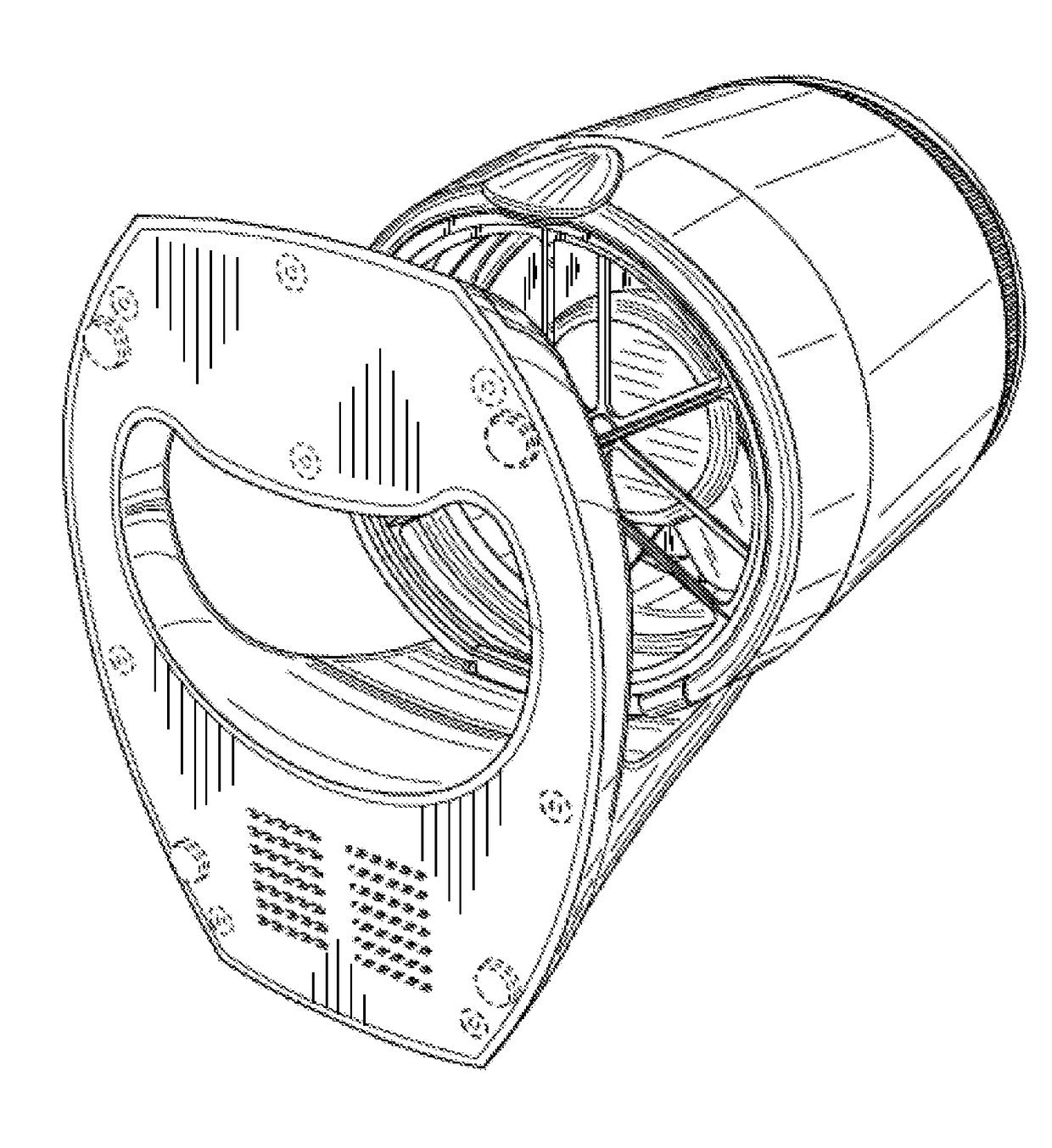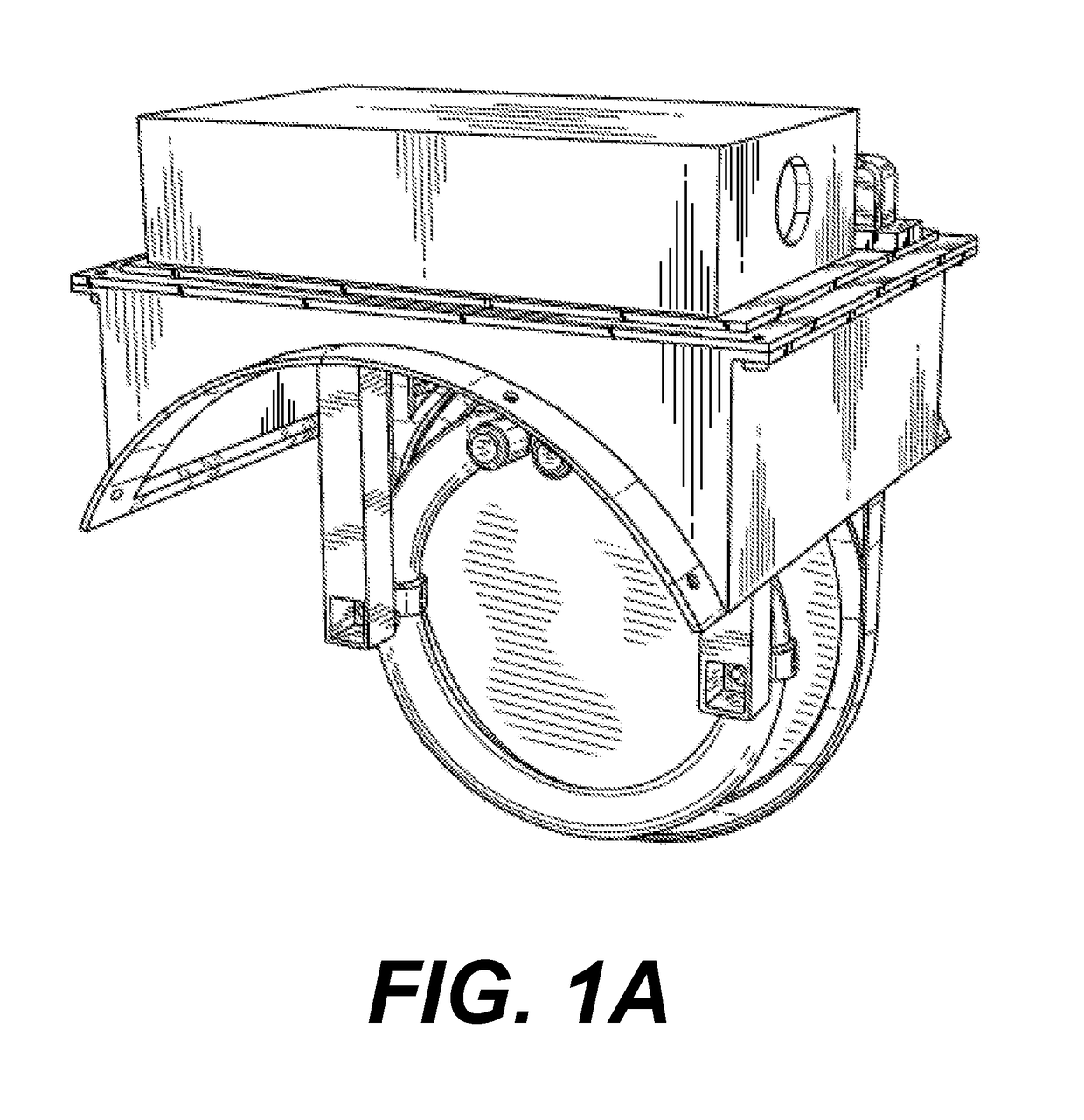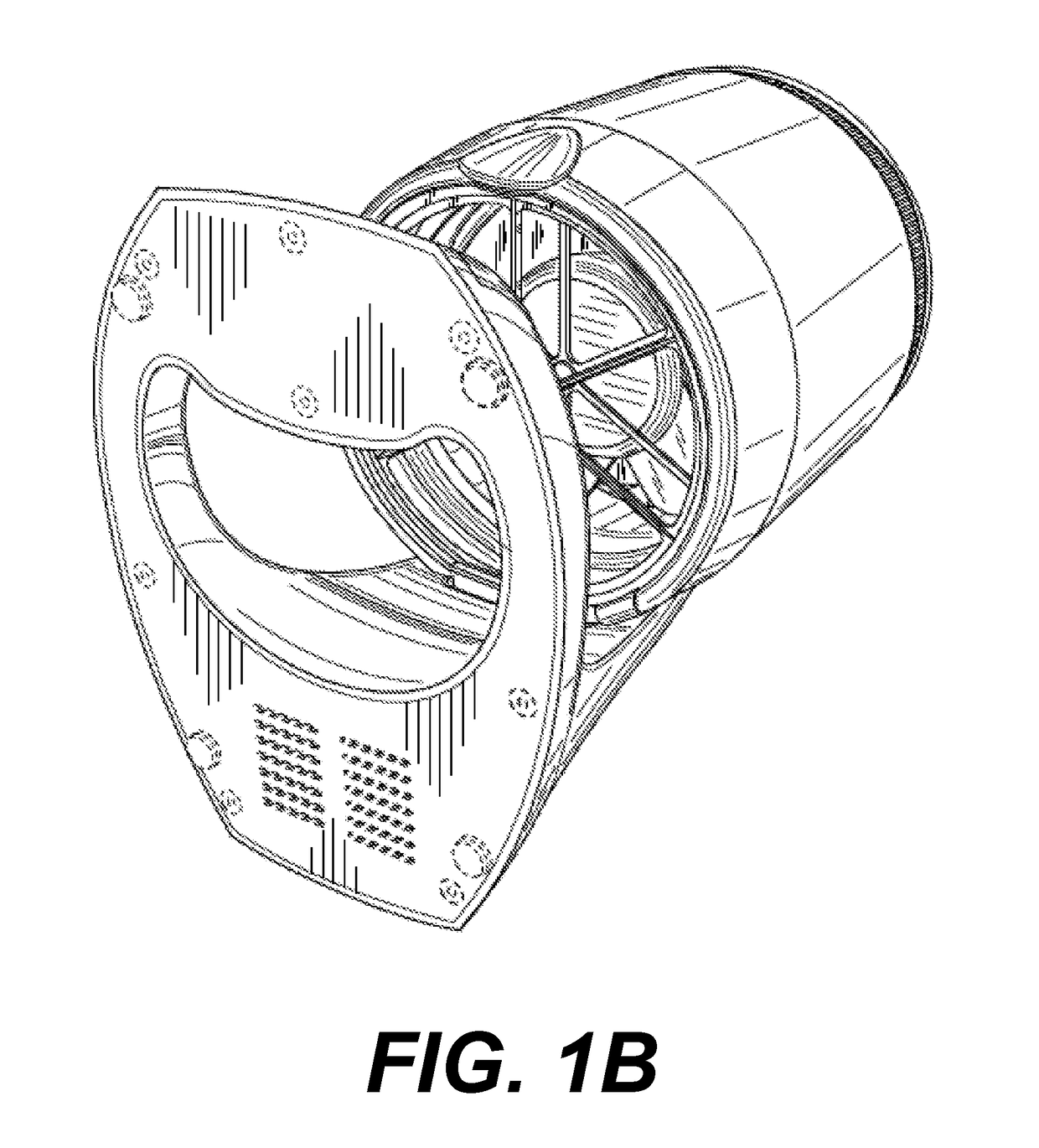Methods of Use of Purified Hydrogen Peroxide Gas in Agricultural Production, Transport, and Storage
a technology of purified hydrogen peroxide and agricultural production, applied in the direction of biocide, plant cultivation, flower cultivation, etc., can solve the problems of corrosivity, worker safety, general toxicity and wholly unsuitable use in occupied spaces, and achieve the effect of reducing the level of bacteria
- Summary
- Abstract
- Description
- Claims
- Application Information
AI Technical Summary
Benefits of technology
Problems solved by technology
Method used
Image
Examples
example 1
Laboratory Testing of DHP Gas for the Control of Mold on Perishable Fruit
[0177]The effects of DHP gas on a perishable food product is performed to determine the efficacy on controlling mold spoilage using the indirect dispersion of DHP gas in a space. Experiments are conducted in a 1584 cubic foot test room. The temperature of test room is maintained between 73° F. and 78° F., and the humidity of the ambient air is between 40% and 65%. Fresh strawberries are incubated in the test room for 5 days without DHP gas (control) or with DHP gas at a final concentration between 0.1 ppm and 0.4 ppm. After the 5-day incubation period, the strawberries are evaluated for the presence of mold spoilage. After the 5-day incubation period, control strawberries demonstrate significant mold spoilage. In contrast, strawberries incubated in the presence of DHP gas show no signs of mold spoilage. Sample results are shown in FIG. 1.
example 2
DHP Gas Controls Bacteria and Fungi
[0178]To demonstrate the effectiveness of DHP gas on bacteria and fungi, test surfaces were inoculated with the bacteria and fungi as provided in Table 1. Control surfaces and test surfaces were placed in DHP gas free and DHP gas containing environments and sampled over a period of 24 hours to determine the organism count remaining.
TABLE 1Reduction of Bacteria and Fungi Exposed toDHP Gas EnvironmentDHPNumber / GasTime toMicrobeinch2(ppm)90% reductionH1N1 virus1.12 × 1060.622.9minutesMS2 bacteriophage1.25 × 1030.6hoursFeline calicivirus ~1 × 1080.6hoursStreptococcus pyogenes 5 × 1040.6hoursMRSA (without soil load) 1 × 1050.62.6hoursMRSA (with soil load) 0.5 × 1050.64.6hoursC. difficile (spores)3.78 × 1060.5-1.070.4% at 24hoursAspergillus Niger 2.2 × 1040.37hours(vegetative)Enterococcus faecalis0.5-1.0hours
example 3
Laboratory Testing of DHP Gas for the Control of Geobacillus Stearothermophilus Spores
[0179]The effects of DHP gas on Geobacillus stearothermophilus spores is performed to determine the efficacy on killing the spores using the indirect dispersion of DHP gas in a space. G. stearothermophilus spores were selected as they are particularly resistant to killing and are often used to validate steam sterilization methods. In these experiments, the mortality rates in G. stearothermophilus spores is assayed using filter strip impregnated with G. stearothermophilus spores which are subjected to DHP gas at a concentration of about 0.3 ppm. The test strips provide a visual readout following exposure to DHP gas for a specific period of time. The G. stearothermophilus impregnated test strips are first exposed to DHP gas and them dipped in a tryptic soy broth solution and placed on a dry bath for a 24-hour incubation period. Following the incubation period, each test strip is analyzed to determine...
PUM
 Login to View More
Login to View More Abstract
Description
Claims
Application Information
 Login to View More
Login to View More - R&D
- Intellectual Property
- Life Sciences
- Materials
- Tech Scout
- Unparalleled Data Quality
- Higher Quality Content
- 60% Fewer Hallucinations
Browse by: Latest US Patents, China's latest patents, Technical Efficacy Thesaurus, Application Domain, Technology Topic, Popular Technical Reports.
© 2025 PatSnap. All rights reserved.Legal|Privacy policy|Modern Slavery Act Transparency Statement|Sitemap|About US| Contact US: help@patsnap.com



